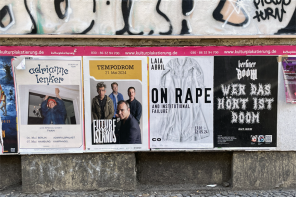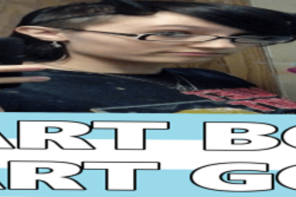BECOMING: THE PROJECT
About three months ago while causally reading the Diagnostic and Statistical Manual of Mental Disorders V (published in May last year) as research for a new project, I was struck by one disorder in particular: ‘gender dysphoria’. As a female who has visibly adhered fairly well to the ‘gender norms’ of her sex, why was I so distressed by this definition?
Perhaps it was because the outline of the disorder is littered with phrases such as “it is important to note that gender nonconformity is not in itself a mental disorder”. Whether you identify as LGBT or not, this need for clarification seems absurd. As what is ‘gender conformity’ or ‘non-conformity’? And why in 2013 would it ever be considered a mental disorder?
What are we talking about here? Are we talking about clothing or hobbies or jobs or personality traits? Despite contesting it, I was sadly all too aware of what they meant by gender conformity. To what extend had I ‘conformed’?
A seed was taking root. I began to question how I would be if I had been expected to fulfill the other set of gender norms. As a visual artist I came to the only conclusion I felt was appropriate to answering this question: ‘I would have to become a boy’. Of course, within this artistic context I could never really ‘become a boy’, but instead I was interested in the process of becoming.
By assuming male gender norms to what extend could I ‘become’? I mean this in no way to invalidate the experience of trans people, but instead to question the pervasive and prescriptive nature ‘gender norms’ have on people as a whole, and the relatively causal nature of this binary division between the sexes.
That was three months ago, and since then I have been taking time to reflect on the person I have been for the last 26 years, Abigail, while also preparing for the emergence of my ‘twin brother’ Andrew.
Andrew will be my new identity for the next three months. What he will be like exactly, I do not know yet. These entries will follow the daily life of Abigail/Andrew in Gent, Belgium, and offer reflections on the emotional and physical realties of their experiences in weekly updates.
BECOMING: A STATEMENT
In ‘Becoming’ I take myself as the subject in an auto-ethnographic visual investigation that expands from my own understanding of my gendered identity and sexuality.
I am becoming my brother’s brother and my sister’s brother, I am becoming my own twin, a brother to myself. I am becoming my mother’s son and my father’s son.
I am reimagining my sense of self around the premise of “what if 26 years ago they had said ‘it’s a boy’, how would I be living differently? How would I interact with the world? How would the world validate me?”
In the assumption of a male identity I am not only questioning how I would fulfil life as a boy, but also how the reality of living as a male influences how I feel in the here and now.
In ‘Becoming Boy’ I can never really become male: I am always in state of becoming.
What does it mean as a designated, biological female to ‘become a man’? To appropriate the identity of another gender whilst remaining physically of female delineation? What is it to be gendered? And to what capacity can I create my own gendered reality?
Words and visuals by A. Liparoto























